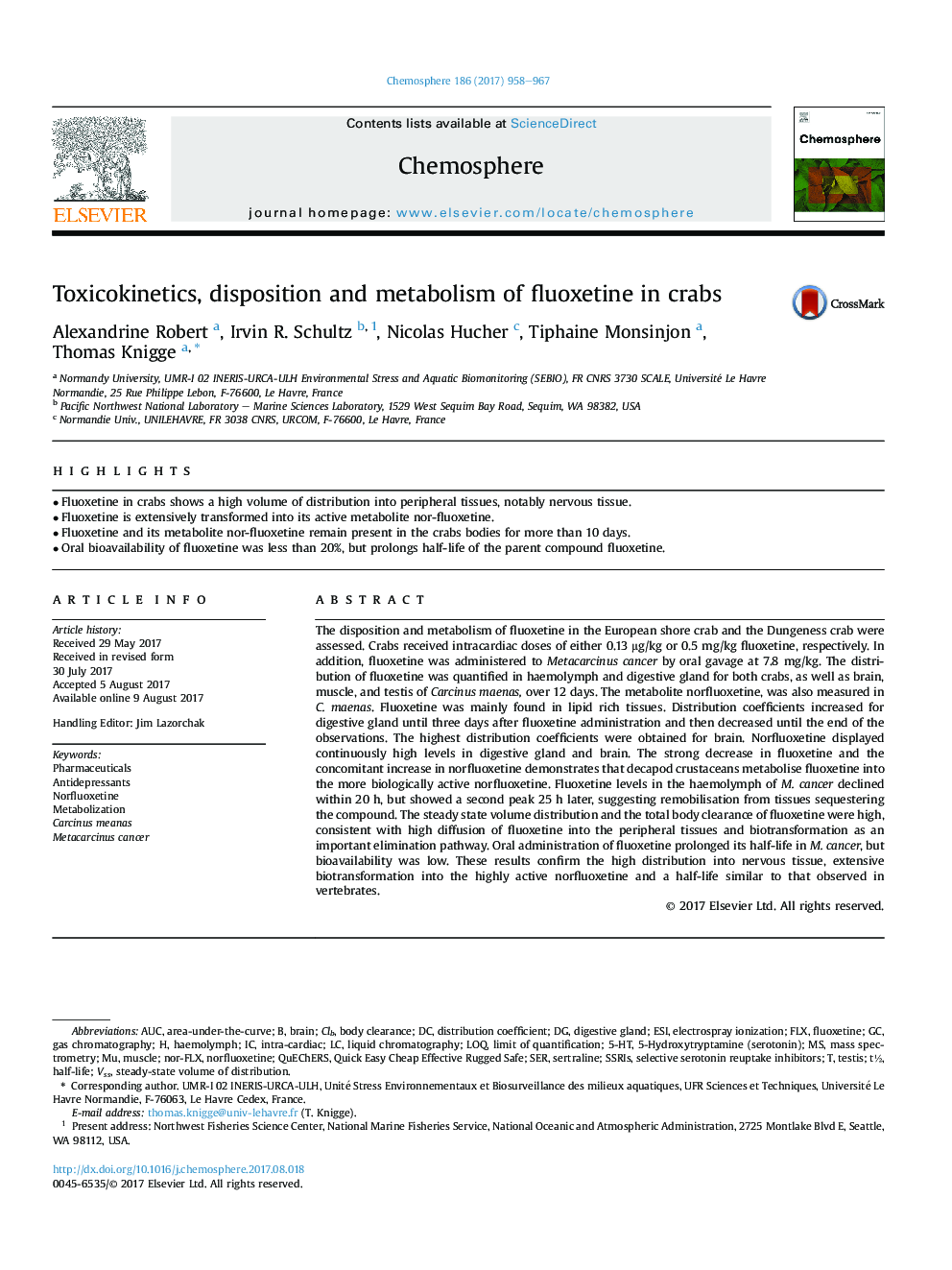| کد مقاله | کد نشریه | سال انتشار | مقاله انگلیسی | نسخه تمام متن |
|---|---|---|---|---|
| 5746042 | 1618785 | 2017 | 10 صفحه PDF | دانلود رایگان |
- Fluoxetine in crabs shows a high volume of distribution into peripheral tissues, notably nervous tissue.
- Fluoxetine is extensively transformed into its active metabolite nor-fluoxetine.
- Fluoxetine and its metabolite nor-fluoxetine remain present in the crabs bodies for more than 10 days.
- Oral bioavailability of fluoxetine was less than 20%, but prolongs half-life of the parent compound fluoxetine.
The disposition and metabolism of fluoxetine in the European shore crab and the Dungeness crab were assessed. Crabs received intracardiac doses of either 0.13 μg/kg or 0.5 mg/kg fluoxetine, respectively. In addition, fluoxetine was administered to Metacarcinus cancer by oral gavage at 7.8 mg/kg. The distribution of fluoxetine was quantified in haemolymph and digestive gland for both crabs, as well as brain, muscle, and testis of Carcinus maenas, over 12 days. The metabolite norfluoxetine, was also measured in C. maenas. Fluoxetine was mainly found in lipid rich tissues. Distribution coefficients increased for digestive gland until three days after fluoxetine administration and then decreased until the end of the observations. The highest distribution coefficients were obtained for brain. Norfluoxetine displayed continuously high levels in digestive gland and brain. The strong decrease in fluoxetine and the concomitant increase in norfluoxetine demonstrates that decapod crustaceans metabolise fluoxetine into the more biologically active norfluoxetine. Fluoxetine levels in the haemolymph of M. cancer declined within 20 h, but showed a second peak 25 h later, suggesting remobilisation from tissues sequestering the compound. The steady state volume distribution and the total body clearance of fluoxetine were high, consistent with high diffusion of fluoxetine into the peripheral tissues and biotransformation as an important elimination pathway. Oral administration of fluoxetine prolonged its half-life in M. cancer, but bioavailability was low. These results confirm the high distribution into nervous tissue, extensive biotransformation into the highly active norfluoxetine and a half-life similar to that observed in vertebrates.
Journal: Chemosphere - Volume 186, November 2017, Pages 958-967
